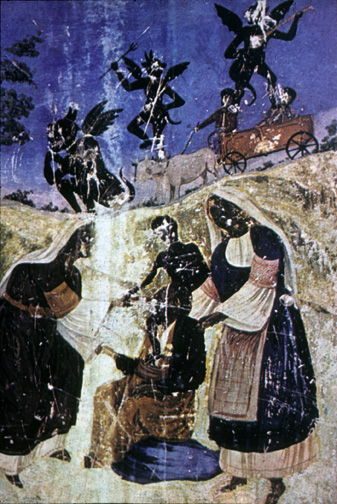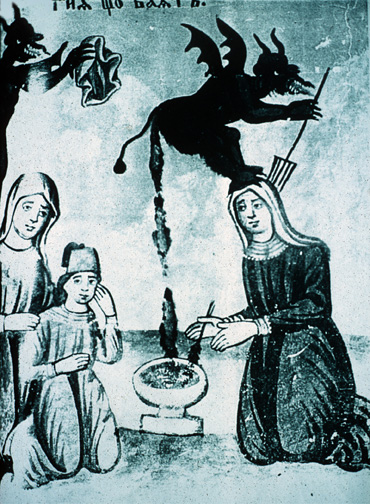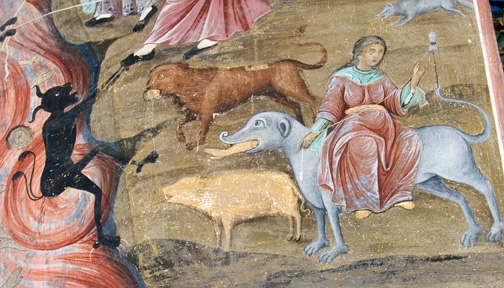A Bulgarian vrachka (medicine woman) gives a herbal decoction to a sick person in a propagandistic mural at Rila cathedral. The painter depicted devils pooping into the medicine, in an attempt to convince the people that their healers worked with demonic powers.
This is one of several polemical 18th century murals in Bulgarian and Macedonian churches and monasteries that targeted women folk healers. It follows the Christian European convention of portraying devils as black.
Although these murals reflect the clergy's persecution of female healers, the Orthodox Church in the Balkans did not commit witch-burnings. What is striking about their campaign is how recent it is, showing that this female sphere of power persisted into modern times.
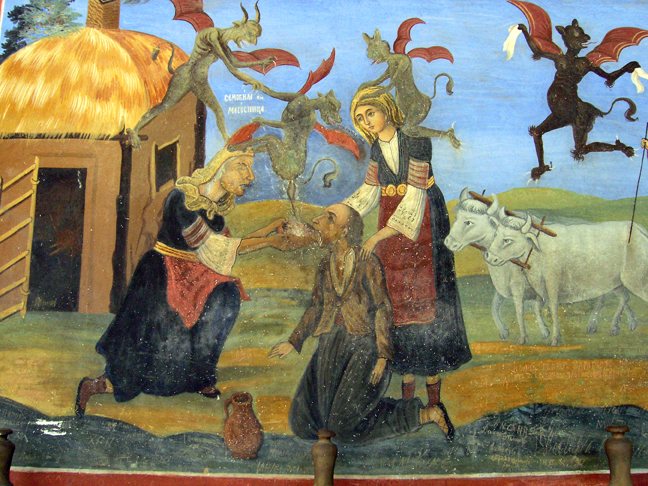
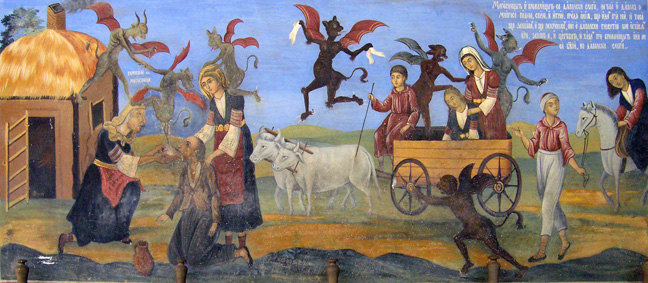
Full view of the mural panel, showing sick people coming long distances by wagon and horseback to be treated by the vrachka. This title means literally "female doctor," but it was understood that such folk healers used incantations and rituals as well as herbal medicine to cure people. They were also described as baiatchki, "charmers."
|
A devil, again portrayed as black, defecating into
|
|
|
|
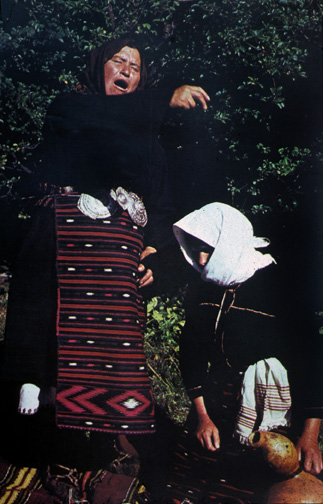 |
Suppressed Histories Archives | Articles | Gallery
